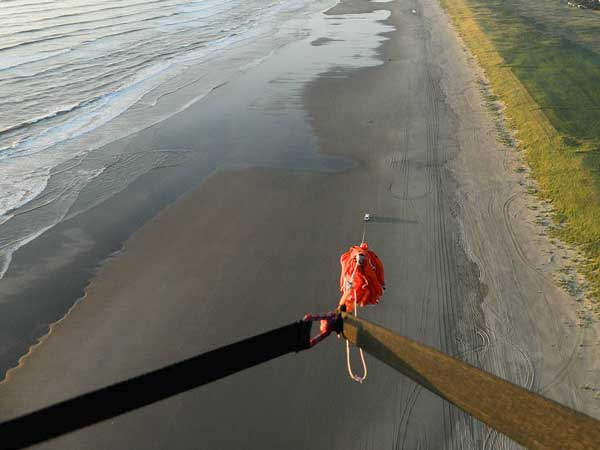A ‘pay-out’ style winch is typically mounted in either a truck or a boat, with the pilot setting up about 50′ downwind. As the vehicle begins driving/moving, the pilots waits for that first ‘tension’ signal to inflate his/her glider. As the glider comes over the pilots head, the line tension is then further increased to a point where the pilot is lifted off the ground.
The winch system is designed to pull the glider just a little faster than it wants to fly, while the glider compensates for this extra speed by climbing up and into the sky. As the tow continues, the truck and pilot get farther and farther apart as the pilot climbs out. Eventually the pilot will reach the maximum available altitude and will release from the line. Up to this point, the whole operation looks very similar to Parasailing, but once the pilot releases from the towline, he/she is free to fly off in any direction he chooses, while the tow operator reels the extended line back to the truck, (typically before it ever touches the ground), and then returns for the next pilot.
Although there are several different designs of pay-out style winches to choose from, the ‘Super Tow Hydraulic Pay-Out Winch’ is the design we had to have. Designed for ‘no surprises’, it has proven to be the safest, most reliable, versatile, and durable winch available today for the purpose of paraglider towing. It’s so good, as a matter of fact, that we had to have two! One for our boat and one for our truck! Visit the guys at TowMeUp.com for a more detailed description of our winches, (and to see a pic of our old truck!).
Our two winches are truly remarkable machines, providing us with an unparalleled tool to enhance the paragliding experience and flight safety for all of our students and tandem flight passengers.

